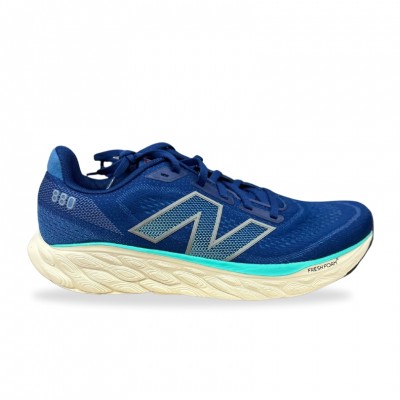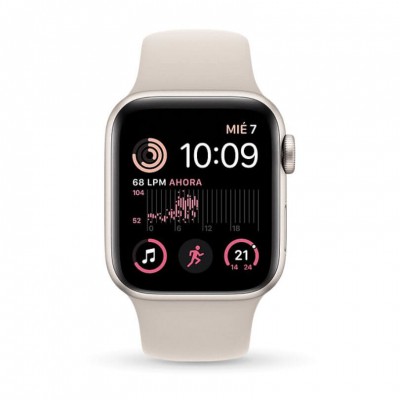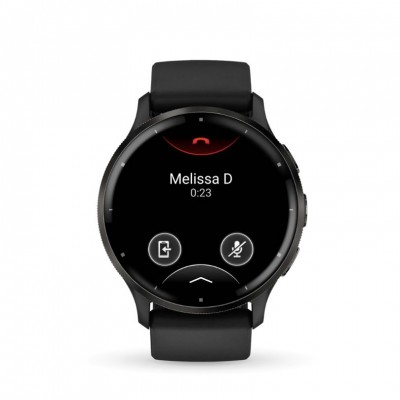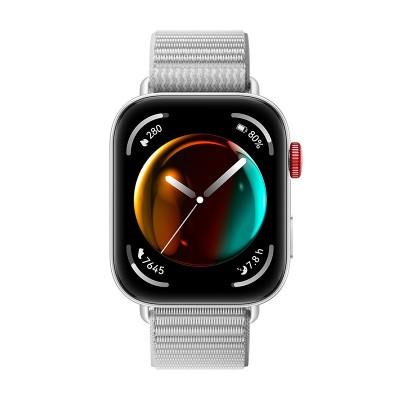Have you ever heard of the "beep test"? If you went to school in the last few years, I'm sure you've heard of it. But don't worry, if you have no idea what I'm talking about, I'll tell you in two seconds. The Course Navette - which is the official name of this invention - is like a game of cat and mouse, but in a running version. Imagine this: you run from one side of the track to the other, chasing a whistle that goes faster and faster. Sounds like fun, right? Well, maybe not so much when you're out there sweating it out.
Not sure which running shoe to choose?
In a few simple steps we help you to choose the ideal running shoe for you
Go to the Shoe FinderBut be warned, this isn't just about recess and gym class. This Course Navette test has crept everywhere: from sports teams that use it to see if their players are in shape, to the physical tests of the firefighters where they can make you sweat like a pig. So, if you ever have to do it, you won't be able to say that you didn't know what it was all about.

The origin of the Course Navette: A Canadian and his brilliant idea
Imagine this: Canada, late 1970s. A physical education teacher named Luc Léger was fed up with the complicated endurance tests that existed. He thought, "There's got to be a simpler way to measure aerobic capacity." And bingo! The Course Navette was born.
Why the weird name? Well, "course" in French means "race," and "navette" refers to running back and forth. Basically, it's a "race back and forth". Léger himself designed it to be simple, effective and applicable to large groups- and boy did he succeed!
Course Navette's basic 5 you need to know about
Applying the theory of this test, at RUNNEA we also point out the five basics you should know about the "beep test":
- It's progressive: you start soft and speed up. It's as if your running friend told you: "Come on, we're going a little faster every minute".
- The famous beeps: they are your guide. When it beeps, you have to be on the line. Not before or after. On time!
- Fixed distance: you run 20 meters out and 20 meters back. Always. It's as if you were on a giant tennis court.
- No rest: forget about breaks. It's continuous until you can't do it anymore.
- The result is measured in "stages": Each stage lasts one minute and has a number of back and forth. The more stages you endure, the better shape you are in.

The Course Navette, traditionally feared
A race loved and hated in almost equal parts, although to be honest, the percentage of people who hate it is probably higher. All for one simple reason: a bad approach and incorrect use. This test has usually been used to evaluate the endurance of students, but not from a health point of view. Rather, to make an evaluation and give each student a score, so that people with greater endurance and capacity for suffering get a better grade and students with lesser capacity get the worst grades.
The same happens in a competitive examination, where the candidates are forced to achieve a certain performance even if they do not enjoy even a second of their training process to take the test.
The problem of approaching it as an exam is that, on the one hand, tension and nerves can play a trick on us and, on the other hand, that we only evaluate the physical ability of a person in a particular discipline, without taking into account that this person may have greater potential in other sports or fields.
These are some of the facts that cause many people to be afraid of running, since they do it by imposition and only their level of performance is evaluated.

Objective and functioning of the Course Navette
Now, as any test validated by scientific evidence, which the Course Navette is, it has a specific purpose. In the case of this test, it aims to measure our cardiovascular capacity, more specifically aerobic power. By means of this test and the application of a formula we can estimate our VO2max (maximum oxygen volume), which can be used to analyze the physical condition of a subject and plan training according to his or her capacity .
The Course Navette is defined as an audible, incremental, continuous, maximal to fatigue, acceleration and deceleration test (Garcia and Sechi, 2014). Although there are certain variants of the test, the most common protocol is to run for as long as possible between two lines separated by 20 meters, so that a constant back and forth course is performed.
The speed or pace of running is regulated by an audible signal, i.e. a beep. The key to the Course Navette is that you must always run the 20 meters before the beep sounds again, since this is the indicator to run the 20 meters again, now in the opposite direction. The difficulty is measured in stages, the first ones being at low speed, for familiarization, while the later ones increase in intensity, forcing the test subject to run faster and faster.
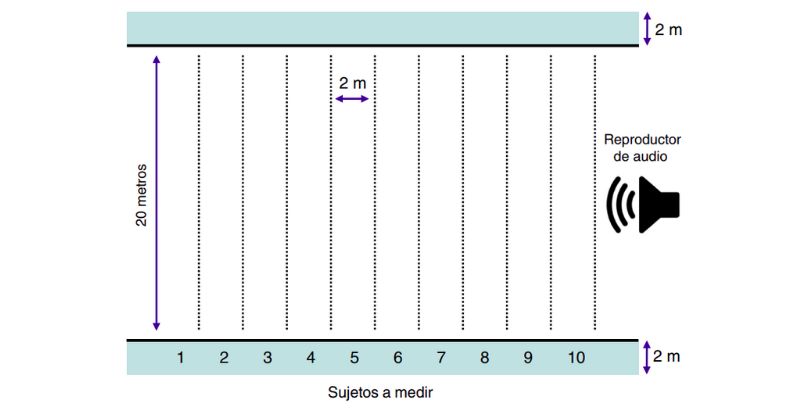
Specifically, it starts at a speed of 8.5 km/h and this increases by 0.5 km/h every minute, and can reach up to 18 km/h. The protocol provides for a maximum of 20 stages, in which the number of times to perform a 20-meter repetition increases as the speed increases. Logically, the higher the speed, the faster the 20 meters are covered. The first stage includes 7 repetitions, while the last stage requires 15 repetitions.
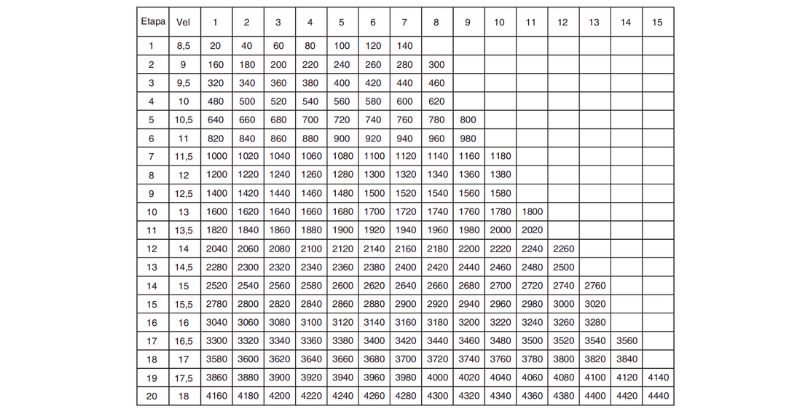
As in any test, certain aspects must be taken into account :
- It is important that the sound recording is heard perfectly, as well as the initial indications and the warning of the passage from one stage to another.
- The test is concluded when the person does not reach or does not step on the line for 2 consecutive occasions.
- If you reach the line before the beep sounds, you cannot start running the next 20-meter stretch until the beep sounds.
- You must run in a straight line and you cannot make 180º turns on the line, you must stop and start again.
- It is advisable to be conservative in the first stages and to make the maximum effort during the test so that the results are real.
Usefulness of the Course Navette
As mentioned above, it has been widely studied that the Course Navette is a test that allows a reliable estimation of our VO2max. It will also be a good test to evaluate the physical condition of an athlete at two different times of the season, for example, at the beginning and at the middle of the season. This is what many team sports teams do, for example.
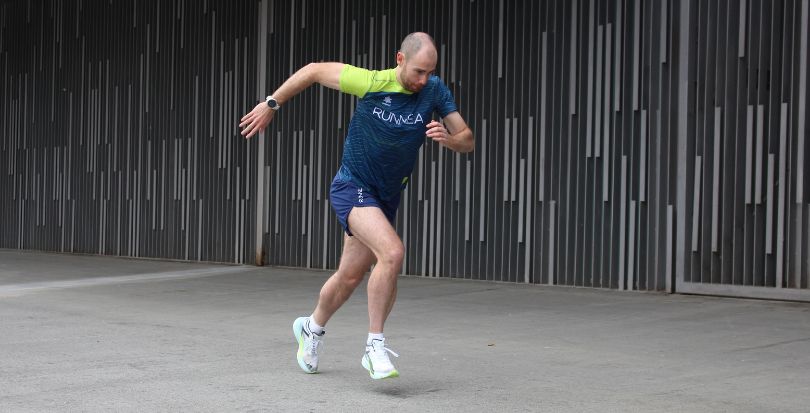
Despite being a test designed three decades ago, it is still one of the most widely used protocols to analyze the cardiorespiratory component of people of both sexes and all types of ages (Garcia and Sechi, 2014). The arguments in favor of the Course Navette are several:
- Direct correlation with V02max.
- Predictive ability for subjects of different physical condition
- Sensitivity to reflect changes caused by training.
- Possibility of prescribing workloads (volume and intensity) based on results
- Relation to general health and fitness
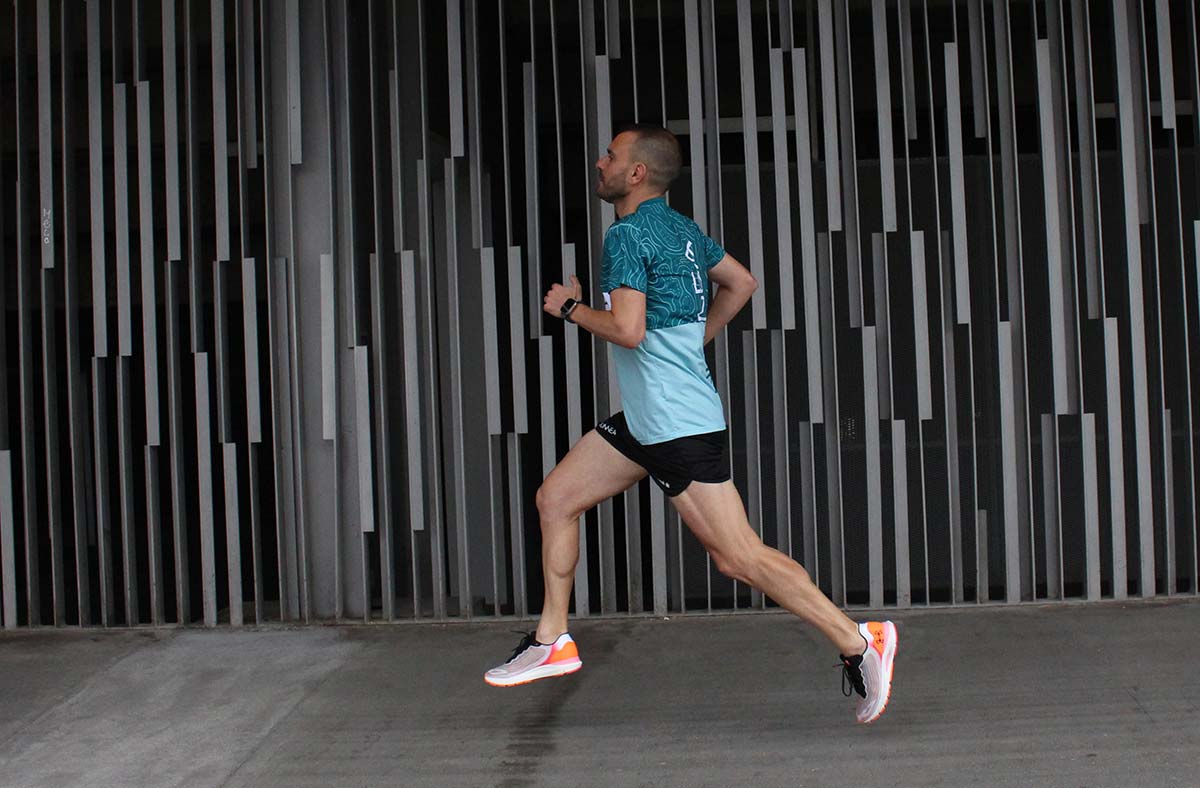
When to apply the Course Navette...from an elite trainer's point of view.
I tell it to you as if I were your personal trainer, but one of those good ones, the ones who train the greats: "Look, the Course Navette is a great tool, but you have to know when to use it. I use it at three key moments:"
- At the beginning of the season: It's perfect to see how you're coming from the break. That way I know where to start with you.
- In the middle of the preparation: Here we check if we are on the right path or if something needs to be adjusted.
- Close to the important competition: This is the moment of truth. We see if you are ready or if you need a final push.
But be careful, don't overdo it. It is not something to do it every week. Remember that it's a tough test and you need to recover well afterwards.
Be aware of your physical condition before doing the Course Navette
Although this test is an easy-to-apply protocol with a lot of potential, it is important to understand that not everyone is physically prepared to do it. If you are not a regular runner, it is advisable to leave the Course Navette for when you are in better physical condition. In the meantime, there are other tests that can be done on foot, such as the Rockport test.
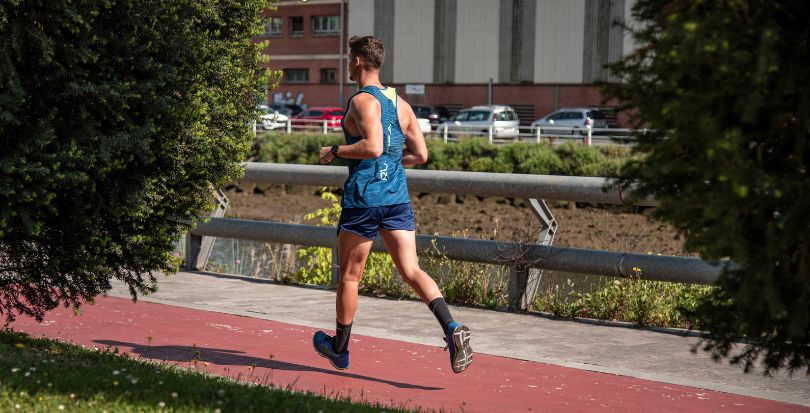
Analyzing our performance is indispensable to monitor the progress we are looking for when we set up a training plan. Whether by performing tests or evaluating training loads and volumes, we must be clear that training involves analysis, both objectively (numerical records) and subjectively (sensations). So there you have it. The Course Navette in a nutshell. A test that seems simple but can tell you a lot about your fitness. So the next time you hear those beeps in a gym or on a track, you'll know what it's all about.
Remember, what you don't measure, you can't improve.
References and images:
Garcia, G., Secchi, J. (2014). Test course navette of 20 meters with one-minute stages. An original idea that lasts 30 years. Apunts. Medicina de l'Esport, 49(183), 93-103. 10.1016/j.apunts.2014.06.001.
Read more news about: Running Training











